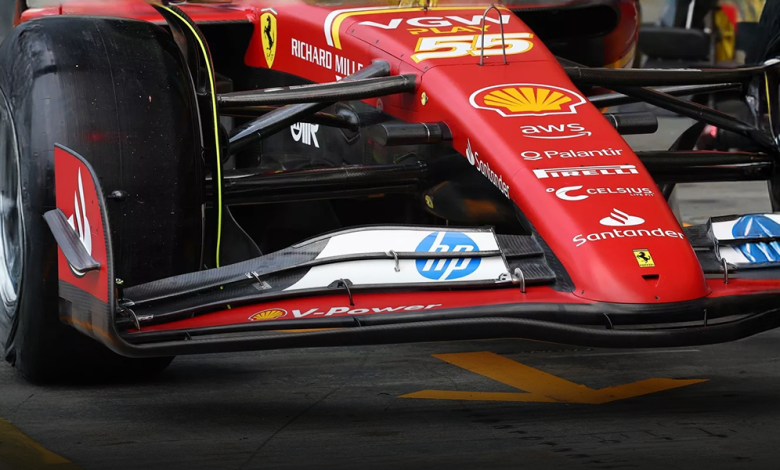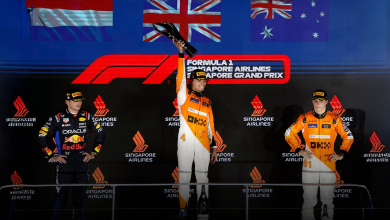Why was Ferrari late to take advantage of the ‘flexible wing’?

F1 teams have discovered that using the aero flexibility of front wings on existing cars can be an effective way to reduce the low-speed understeer and high-speed oversteer tendencies of ground-effect cars.
Teams such as McLaren and Mercedes in particular have made significant strides in optimising their designs throughout the season.
Ferrari adopted a new flexible front wing design to provide performance gains in this area since the Singapore Grand Prix, achieving wins in the United States and Mexico.
Commenting on why he was so slow to aggressively pursue the concept, Ferrari team boss Fred Vasseur explained that this was because they believed the FIA would restrict the use of flexible wings from the Belgian Grand Prix onwards.
Speaking to Motorsport.com about the flexible wing situation, Vasseur said: “We have been waiting for this decision since the FIA started looking into flexible wings at the Belgian Grand Prix.
“We thought this would not be accepted, but it was not. So we lost 1-2 months.”
Vasseur said Ferrari’s budget constraints were also a factor in its decision to be cautious about a front wing design that would take better advantage of aero flexibility.
“You have to make some choices because of the budget cap,” Vasseur said.
“That means if you’re sure it’s not going to be allowed and you start developing something, it could cost you time in the wind tunnel.”
Since the Belgian GP, the FIA has increased its analysis of teams’ front wing flexing and fitted new cameras on the cars.
Nikolas Tombazis, the FIA’s head of single-seaters, said recently that no changes would be made to the flexible wing regulations in the short term due to differences in approaches among teams.
“We can’t easily predict this within the rules because the front wing is loaded in different ways,” Tombazis said.
“It is very difficult to do accurate testing because no two wing loading patterns are exactly the same.”
“So, since these rules have been in place since 2022, it would not be the right decision to suddenly change them for 2024 or 2025.”
“But the information we’ve gathered could point us toward a slightly more effective solution for 2026.”






















